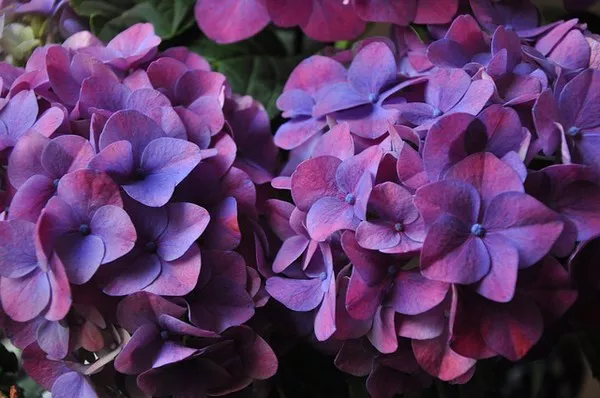Hydrangeas are beloved for their large, showy blooms that add a touch of elegance and charm to any garden. These flowering shrubs come in various colors and varieties, making them a popular choice among gardeners. One of the most common questions asked by enthusiasts is, “How long do hydrangea flowers bloom?” In this comprehensive guide, we delve into the factors influencing the bloom duration of hydrangeas, tips for prolonging their flowering period, and the different types of hydrangeas with varying bloom durations.
Understanding Hydrangea Blooms
Before delving into the duration of hydrangea blooms, it’s essential to understand the anatomy of these captivating flowers. Hydrangea blooms consist of clusters of small flowers called florets, which collectively form the large, pom-pom-like structures characteristic of the plant. Each floret contains reproductive organs and contributes to the overall beauty of the bloom.
Factors Influencing Bloom Duration
Several factors influence how long hydrangea flowers bloom, including:
Hydrangea Variety: Different hydrangea species and cultivars have varying bloom durations. Some varieties bloom for several weeks, while others may only bloom for a couple of weeks.
Environmental Conditions: Factors such as temperature, sunlight, soil moisture, and humidity play a significant role in hydrangea bloom duration. Optimal growing conditions can extend the flowering period, while adverse conditions may shorten it.
Pruning Practices: Improper pruning can affect the timing and duration of hydrangea blooms. Pruning at the wrong time or too aggressively can remove flower buds, leading to reduced bloom duration.
Fertilization: Providing the right nutrients at the appropriate times can promote healthy growth and prolonged blooming in hydrangeas. However, excessive fertilization or using the wrong type of fertilizer can have adverse effects.
Climate Zone: Hydrangeas thrive in different climate zones, and bloom duration can vary accordingly. Some varieties may bloom for a more extended period in milder climates, while others may have a shorter bloom duration in colder regions.
Types of Hydrangeas and Their Bloom Durations
Hydrangeas belong to several species, each with its unique characteristics and bloom durations. The following are some common types of hydrangeas and insights into their bloom durations:
Bigleaf Hydrangeas (Hydrangea macrophylla): Known for their large, colorful blooms, bigleaf hydrangeas typically bloom from late spring to early summer. The bloom duration can vary depending on the variety and environmental conditions but generally lasts for several weeks.
Panicle Hydrangeas (Hydrangea paniculata): Panicle hydrangeas are prized for their cone-shaped flower clusters and long bloom periods. These hardy shrubs often start blooming in mid-summer and can continue well into fall, providing a spectacular display in the garden for several months.
Smooth Hydrangeas (Hydrangea arborescens): Smooth hydrangeas are known for their round, fluffy white blooms. While individual flowers may not last as long as those of other hydrangea species, the plant produces new blooms throughout the summer, resulting in a relatively extended bloom period.
Oakleaf Hydrangeas (Hydrangea quercifolia): Oakleaf hydrangeas stand out for their distinctive foliage, which resembles the leaves of oak trees, and their elongated flower clusters. Blooms typically appear in late spring to early summer and can last for several weeks, with the added visual interest of changing leaf colors in the fall.
Climbing Hydrangeas (Hydrangea anomala subsp. petiolaris): Unlike other hydrangea types, climbing hydrangeas produce lacecap-like blooms and are prized for their ability to climb walls or structures. The bloom duration can vary depending on growing conditions but generally extends from late spring to early summer.
Tips for Prolonging Hydrangea Bloom Duration
While the bloom duration of hydrangeas is influenced by various factors, there are several steps gardeners can take to prolong the flowering period:
Choose the Right Variety: Select hydrangea varieties known for their long bloom durations, such as panicle hydrangeas or some bigleaf hydrangea cultivars.
Provide Optimal Growing Conditions: Ensure that hydrangeas receive adequate sunlight, water, and well-draining soil. Mulching can help retain soil moisture and regulate temperature fluctuations.
Prune Carefully: Follow proper pruning practices, avoiding excessive or untimely pruning that could remove flower buds. Remove spent blooms promptly to encourage new growth and prolong blooming.
Fertilize Wisely: Apply a balanced fertilizer formulated for flowering shrubs according to package instructions. Avoid over-fertilizing, as excessive nitrogen can promote lush foliage growth at the expense of blooms.
Protect from Extreme Conditions: Shield hydrangeas from extreme temperatures, strong winds, and drought stress, as these factors can shorten the bloom duration and affect overall plant health.
Consider Growing Conditions: If growing hydrangeas in containers or less-than-ideal conditions, monitor their needs closely and provide supplemental care as necessary to promote prolonged blooming.
Conclusion
The duration of hydrangea blooms varies depending on factors such as variety, environmental conditions, pruning practices, and care techniques. By understanding these factors and following best practices for hydrangea cultivation, gardeners can enjoy prolonged blooming periods and vibrant displays of these iconic flowers in their landscapes. Whether adorning garden beds, borders, or containers, hydrangeas add beauty and charm to any outdoor space with their exquisite blooms and lush foliage.


